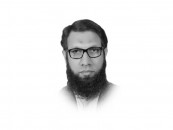Pakistan’s voter turnout conundrum
While income strongly correlates with turnout, literacy rates across districts do not.

In search of an explanation for this anomaly, I analysed voter turnout in each district of Punjab through a simple linear regression model. Using data from the 1998 Census, the 2011 Punjab Development Statistics Report, the Pakistan Social and Living Standards Measurement Survey, the Lights Report of the National Oceanic and Atmospheric Administration and the 2008 General Election Report, I found interesting and often surprising correlations.
Most tellingly, there is a strong positive correlation between income per capita and voter turnout. In large cities, areas with higher living standards have lower voter turnout. Across Punjab though, this is not the case; in fact, the opposite holds. In 2008, districts with higher levels of income per capita had higher voter turnout. Outside urban centres, economic development drives voter turnout. There is a simple explanation for this trend: regions with proportionally higher levels of income have more at stake during an election.
While income strongly correlates with turnout, literacy rates across districts do not. An area with relatively high literacy is not necessarily going to have high voter turnout. Again, this defies conventional wisdom. It is generally believed that with a higher prevalence of education there is more involvement with the political process. But, puzzlingly, the data say otherwise. There is a potential explanation for this incongruity: the literacy rate statistic is inherently flawed. An individual is considered ‘literate’ if they can read a newspaper and write a simple letter. If turnout was regressed on a statistic of educational quality, perhaps, a stronger correlation would be observable.
Crime per capita in a district is negatively correlated with voter turnout in that district. If a district has high crime per capita, voter turnout is bound to be low in that district. As law and order improves and crime per capita falls, turnout is higher. When voters feel secure, they have more faith in the system and have a greater incentive to turn up on election day.
The number of union councils per capita is positively correlated with voter turnout. If a district has more union councils per capita, that district is more likely to have a higher voter turnout. This is probably because as the number of union councils per capita increases, individual voters have greater interaction with local government officials. With greater interaction, voters are more inclined to vote during a general election.
Diverse sets of factors correlate with voter turnout in Pakistan’s 2008 general election. While it is important to remember the statistician’s mantra of correlation is not causation, each of these factors lends insight into our low turnout. With economic development, we can expect turnout to rise. As law and order improves, voters will be more comfortable at polling stations. As the local government improves, confidence in the political process will heighten and voters will be proud of their right to vote. We often speak about the evolution of democracy, but democracy cannot evolve unless we vote for the right candidates. As my research shows, we are not pushed to vote unless incomes rise, crime rates fall and local governments are strengthened. But none of this is possible if we do not utilise our vote.
It is most disappointing to see low turnout in urban areas where education levels are higher. If we have been privileged with an education, the least we can do is to vote, thereby fulfilling our basic responsibility as citizens of this democracy. We need to lead our country out of this vicious cycle of low turnout and into a better future. Luckily for us, it starts with ticking a box.
Published in The Express Tribune, March 30th, 2012.
















COMMENTS
Comments are moderated and generally will be posted if they are on-topic and not abusive.
For more information, please see our Comments FAQ